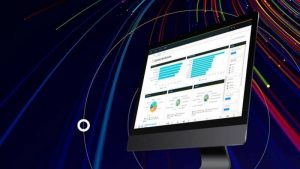In fact, while measurement has always been important in marketing, the explosion of data across the web, ability to track the digital footprints of customers, and availability of an array of reporting and analytics tools to help sift through that data and make sense of it – have fundamentally changed the dynamics and requirements of the marketer’s job over the past decade. For today’s marketer, analytical skills are increasingly critical. Strategies are formed and adjusted less on “gut feel” and more on trends and real-time results. Determining the right performance indicators to track, figuring out where to get the data, creating finely tuned dashboards to monitor progress, and telling stories to showcase success are all paramount to a marketer’s livelihood.
This evolution is not unique to marketing. While marketing’s evolution may have started earlier, it has been happening across all areas of the organization, namely HR – and for good reason. Talent teams today are under pressure to improve retention, especially as the economy improves and baby boomers begin to retire. Recruiting teams want to improve hiring decisions, knowing that a bad decision can cost as much as 5x the annual salary of that employee or more to correct(1). Training teams want to measure not just attendance and scores of their programs, but correlate that data with performance to understand the real impact of those programs. Despite this, HR teams often struggle with analytics. In fact, according to a recent Deloitte study 75% of HR leaders believe that using analytics in HR is “important,” but only 8% believe their organization is “strong” in this area – making it the second largest capability gap for organizations, trailing only the need to build better leadership.(2)
This isn’t a surprise, as HR teams are struggling with many of the same issues marketers continue to face, and more – such as determining the right questions to ask across business units to understand what to measure, identifying where and how to get reliable data, and once the insights are in, figuring out what to do next. Some HR teams have been hiring data analysts and internal consultants to transform HR into a more data-driven business unit, but with the median base salary of a junior-level data analyst starting at around $ 91k(3), this is not an option for many organizations, forcing teams to look within and build the necessary skills internally.
All of that said, there are some key things that HR teams can do to address these issues that make the journey a bit easier:
First, start small and pick a single project that could show some results.
For example, let’s say that your organization recently rolled out a series of onboarding checklists for each department. One project could be to determine the impact of this effort on employee performance. It could be done for just a single department – say the sales team – to keep things simple.
Once you have decided on a project, have a designated person on the HR team work with business leaders to understand the business processes around this issue, and how it can be measured.
In the example above, the HR representative could meet with the sales department head to discuss the project, learn how employee performance is measured within that team, and critically, discuss what data points exist to measure performance of employees who completed the checklist versus those who didn’t.
Next, learn what systems are available to run reports, and how these systems can help solve this problem.
Building onto the example above, once the HR representative learns what data points could help measure performance, he/she will also want to confirm what systems contain the data, and how to get it. For the sales team, results within the CRM system could be important. Performance review scores within the talent management system will likely also be key. Note that a good talent management system will have a strong analytics engine, and may even provide pre-built dashboards and insights that can be used as a starting point for many HR analytics initiatives such as this.
Lastly, connect with others across the organization – especially within marketing, finance, operations, and IT to learn how they are measuring their business processes – and see if there are any tools or techniques they are using that HR could leverage.
Back to the example above, one of the final challenges will be in leveraging the data to draw conclusions. Basic data management skills will be helpful in gleaning the needed insights. If these skills don’t exist within the HR team, the HR representative might ask the sales department head (or other marketing/finance/operations/IT contacts across the organization) if he/she can partner with someone on their team to help crunch some numbers while shadowing.
Working through this process to address a small, single project will be a great jump start to learn how to measure and optimize additional, more complex HR processes. Importantly, this quick win can help build the business case for greater support and investment in HR analytics initiatives going forward.
While this is not the same scenario I experienced as a marketer over the past ten years, there are certainly parallels. Whether it is measuring a single marketing campaign, or a single onboarding checklist, the key is to start small, determine exactly what to measure, explore the systems available, and connect with others across the organization that can help along the way.
1 Society for Human Resources Management (SHRM), http://resources.dice.com/report/the-cost-of-bad-hiring-decisions/
2 Bersin by Deloitte, Global Human Capital Trends 2015, http://marketing.bersin.com/hc-trends.html
3 http://www.burtchworks.com/2014/01/06/data-science-study-press-release-2015/
Business & Finance Articles on Business 2 Community(105)








